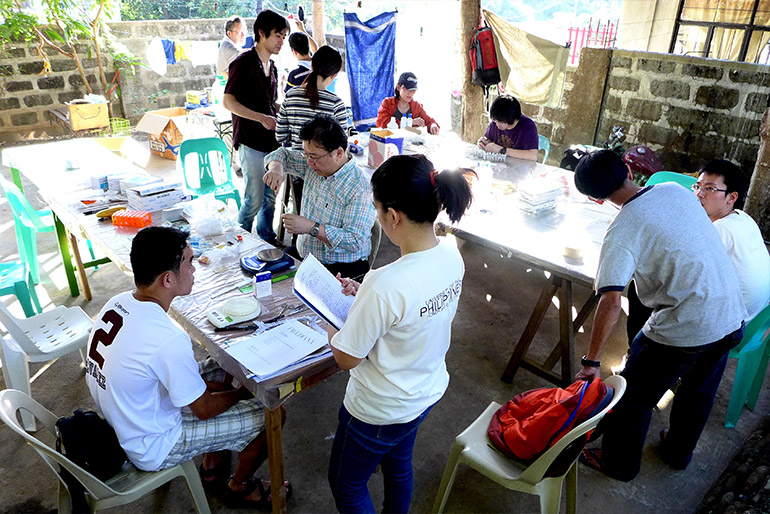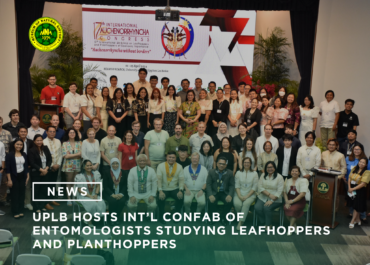
Researchers from the University of Tokyo Graduate School of Agricultural and Life Sciences (UT GSALS), UPLB College of Veterinary Medicine (CVM) and the UPLB Museum of Natural History (MNH) collaborated once again to document the presence of zoonotic viruses in Philippine bats by conducting a fieldwork in Mabini, Pangasinan from 22-24 February 2016.
Bats are potential reservoirs for emerging diseases since they are capable of transmitting zoonotic viral diseases. “In 2004 in fact, the Hendra virus which killed both horses and humans in Australia has been proven to be transmitted by fruit bats,” Dr. Joseph S. Masangkay, Professor Emeritus at CVM and MNH Curator said. Dr. Masangkay leads the Philippine side of the research team.
According to Masangkay, “a similar disease caused by Nipah virus appeared in Malaysia in 2005 and caused death in humans and pigs.” He added, “we have to be ready, so it is really important to see if similar zoonotic viruses are present in the different species of bats in our country.”
The Philippines has more than 70 identified species of fruit- and insect-eating bats. Monitoring bat viruses is important to detect novel bat-borne infectious diseases. With an approved Gratiutous Permit issued by the DENR Regional Office I and a Wildlife Transport Permit from CENRO-Alaminos City, the UT GSALS-CVM-MNH team, with help from staff of the Mabini local government unit was able to collect 8 bat species for zoonotic disease research.
The research team was also accompanied by members of Balincaguin Conservancy, a cavers group based in Mabini and the only National Speleological Society grotto in the Philippines, during the collection in the karst areas of the Cacupangan Cave system in Mabini.
The research team has been investigating viruses in bats since 2007 and has done collections in UP Diliman, Quezon City; Mt. Makiling and UP Los Banos, Laguna; Talikud and Samal Islands in Davao Oriental; Malay, Aklan; and in Atimonan, Pagbilao, and Polillo Islands in Quezon.
Some of their early results have shown that Philippine bats can be sources of the Yokose virus and bat coronavirus. Aside from discovering a novel gammaherpesvirus in 2013, the team has also recently found that the protozoans Cryptosporidium and Eimeria are also carried by Philippine bats.
Search
Archives
Categories
- Announcement (21)
- Feature (21)
- News (141)
- Press Release (55)
- Research (4)
- Services (3)



